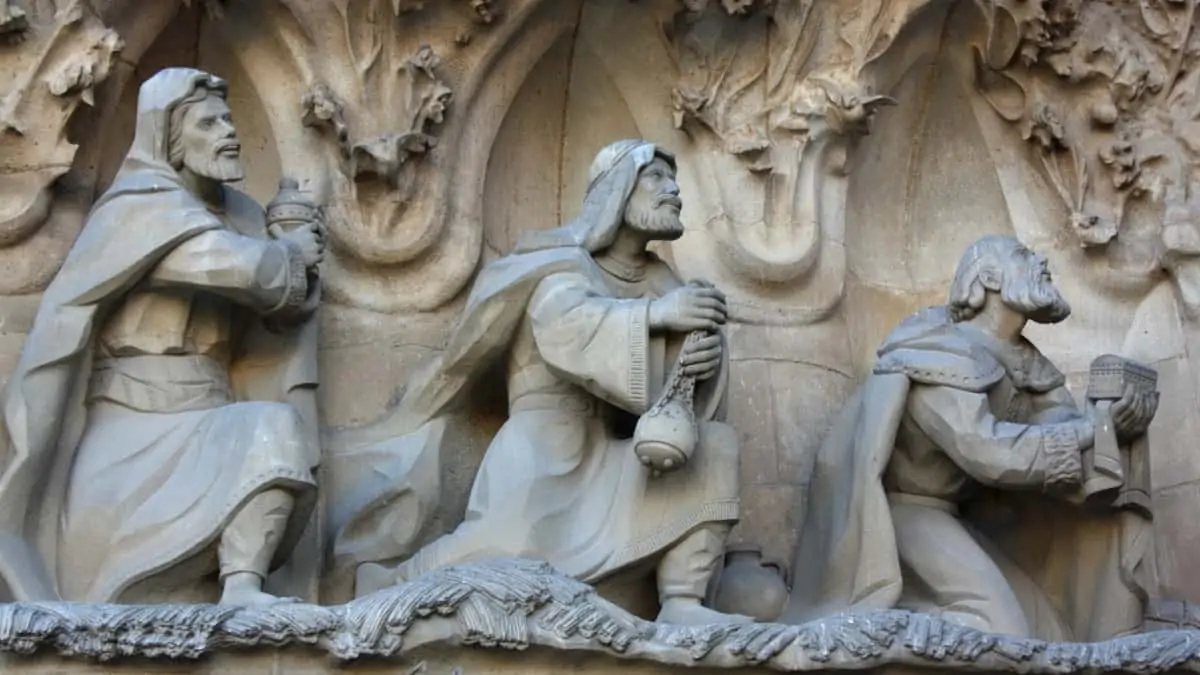
Or the fact that Antoni Gaudi is buried inside the Basilica, which he devoted his life to designing?
From its glorious 18 symbolic towers to its breathtaking stained-glass windows, Sagrada Familia is full of fascinating details and hidden stories that make it one of the most unique landmarks in the world.
Despite its global fame, not everyone admired Gaudi’s masterpiece—even writer George Orwell once called it “one of the hideous buildings in the world.”
Let’s dive into some incredible facts about this architectural wonder.
Top Tickets
# Sagrada Familia entry ticket
# Guided tour of Sagrada Familia
# Sagrada Familia guided tour with tower Access
Here are 25 incredible facts about Sagrada Familia that will leave you amazed.
Sagrada Familia attracts 5 million every year
Sagrada Familia attracts more than 5 million tourists a year, which means, on average, two tourists enter the gates of Sagrada Familia every second.
The interior ceiling of Sagrada Familia mimics trees
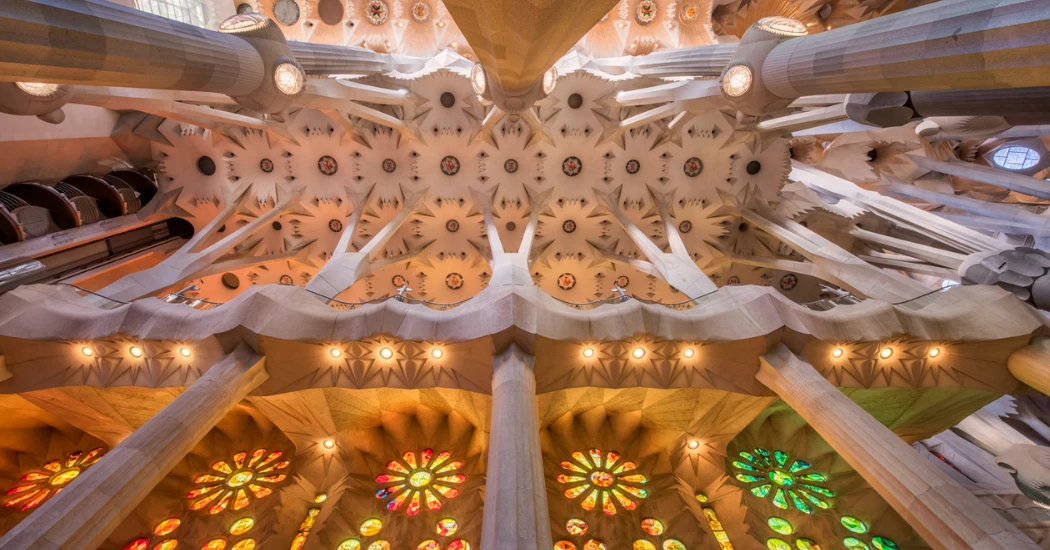
Gaudi always took inspiration from nature, and he did just that for this masterpiece. Sagrada Familia’s interior is full of natural symbols; the best example is the Basilica’s ceiling.
The mighty ceilings are held together by columns resembling trees branching out, which appear like a thick forest.
The columns in the Passion facade of Sagrada Familia are designed to resemble sequoia trunks.
Gaudi used geometric branching structures almost 125 years back – one fact about Sagrada Familia, which still enthralls architects.
Sagrada Familia will take 144 years to build
The Egyptians built the Great Pyramid of Giza from 2,580 BC to 2,560 BC – 20 long years. After that, it took the best engineers of those days ten years to build a stone causeway that connected it to a temple in the valley below.
Meanwhile, it took twenty thousand workers 20 years to build the Taj Mahal.
In sharp contrast, when the construction of Sagrada Familia finally winds to completion in 2026, it will have been under construction for 144 years.
This long duration is an incredible fact about Sagrada Familia, and it won’t be easy to beat in the future.
Unbelievable but true: Did you know that Sagrada Familia has been under construction for 136 years without a building permit?
Gaudi used the faces of actual people for his sculptures
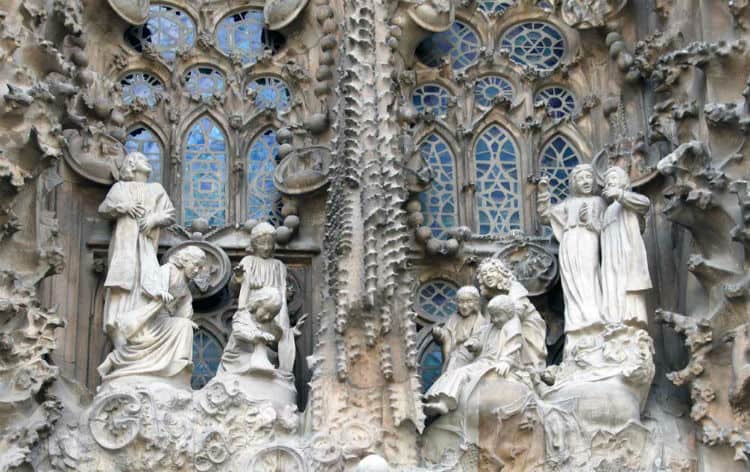
Gaudi brought authenticity to the Nativity Facade by choosing real people from the local community—workers, pilgrims, and schoolchildren—valuing natural expressions over traditional artistic beauty.
Each figure was carefully matched to their role, such as a devout woman for the Virgin Mary and a stonemason for Saint Joseph, with even chance encounters inspiring the sculptures of trumpeting soldiers.
While sculpting the Portal of Mercy, Gaudi used the death masks of diseased Barcelona citizens and builders of Sagrada Familia to shape his sculptures’ faces—Gaudi’s tribute to the people who contributed.
Visual Story: 12 must-know tips before visiting Sagrada Familia
Sagrada Familia’s design has no straight lines except…
Gaudi had always disliked straight lines and angles. He said, “In nature, nothing is straight.”
Once you enter this Spanish Basilica, you will realize everything – patterns, pillars, sculptures, etc.
This Sagrada Familia fact stands out when you visit the Basilica in Barcelona.
And the only exception where you can see straight lines is the Passion facade. Here, straight lines are used to reflect the suffering of Jesus Christ; hence, this facade is austere and simple, with bare stone and harsh lines.
Sagrada Familia is 170 meters tall because…
Gaudi believed that human-made structures should be shorter than God’s structures.
Since Montjuïc hill, Barcelona’s highest point was 171 meters tall, Gaudi decided that his church’s height should be one meter less – 170 meters (560 feet).
The Basilica will have three grand facades
As Sagrada Familia is still under construction, only two of its three grand façades have been completed.
The Nativity Facade, built between 1894 and 1930, represents the joy of Christ’s birth and was constructed under Gaudi’s supervision.
The Passion Façade, built from 1954 to 1976, depicts Christ’s suffering and crucifixion with a stark and dramatic design.
The Glory Facade, intended to symbolize Christ’s resurrection and eternal glory, began construction in 2002 and is still awaiting completion.
Sagrada Familia is full of symbolism
Symbolism has been part of Christianity forever. For instance, the Good Shepherd with a sheep over his shoulder symbolizes the lost sheep, the white dove represents the Holy Spirit, etc.
Gaudi has used this and extended it to natural symbolism. You can’t miss this fact the moment you step inside Sagrada Familia.
The massive pillars that support the entire structure look like giant trees.

One of these pillars has a turtle at its base, and another has a tortoise, symbolizing the balance between land and sea.
The same symbolism exists in Gaudi’s Park Guell, too. Check out amazing Park Guell facts.
Sagrada Familia is a UNESCO Heritage site
UNESCO seems to love Antoni Gaudi, for seven of his buildings are UNESCO World Heritage sites.
The best among them is Sagrada Familia, which was designated as a UNESCO World Heritage Site in 1984.
It was recognized for its innovative and artistic design and construction techniques.
Gaudi’s other masterpieces that made it to UNESCO’s list are Park Guell, Casa Batllo, La Pedrera, etc
Antoni Gaudi is buried in Sagrada Familia
Antoni Gaudi died on 10 June 1926 – a few days after being hit by a tram.
Since he wasn’t carrying his papers, people couldn’t identify him.
He was believed to be a beggar and didn’t get proper treatment.
He is buried where he spent his final days, the Basilica to which he dedicated his life.
His tomb is in the Chapel of the Virgin of Carmel in the Sagrada Familia Crypt, located beneath the Basilica’s apse.
Recommended
Sagrada Familia started as a church but is now a Basilica
When the construction began, Sagrada Familia was to be a church.
When Gaudi took over the reins, he wanted it grand, so he planned for the Sagrada Familia cathedral.
He even took inspiration from the Barcelona Cathedral for the floor plan.
As it became popular amongst the public, its priority in the eyes of the religious leaders grew.
After a few decades of construction, they designated Sagrada Familia as a cathedral and in 2010, Pope Benedict XVI declared it a Basilica.
All the 18 towers of the Basilica represent someone
It is a fact that all the 18 towers of Sagrada Familia represent someone.
Twelve of these 18 towers represent the apostles, and four represent the evangelists.
The Virgin Mary gets a tower with a star on the top, and the tallest tower represents Jesus Christ.
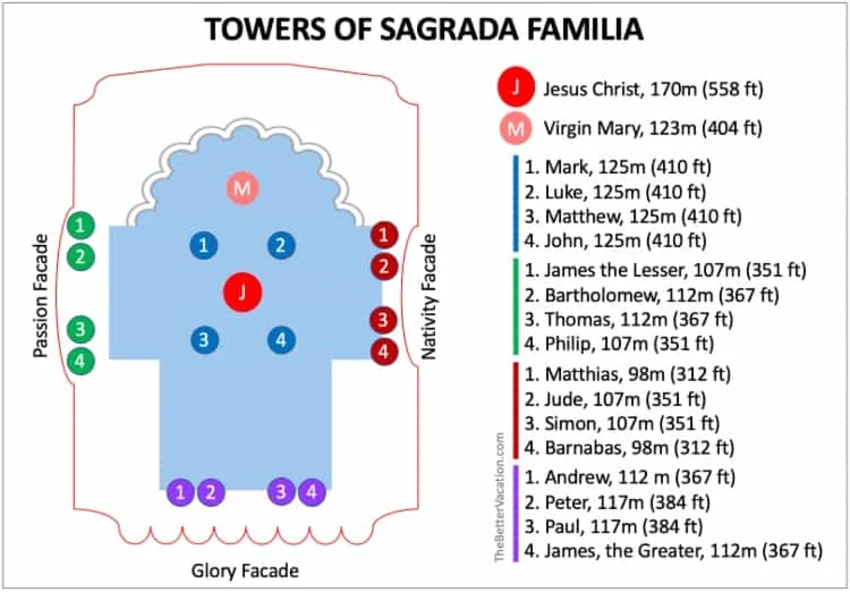
Today, only one tower is yet to be completed: the tower of Jesus Christ, which would mark the completion of this more-than-a-century-long construction.
Towers of Sagrada Familia have lifts
If other buildings have lifts, it is normal. But remember, Gaudi designed these towers more than a century ago.
Besides, these towers are thin, and to build a lift in them, which carries six people at a time, is marvelous.
These lifts allow people to go up the towers in the Nativity and Passion facades and look at the towers, sculptures, and Barcelona city from up close.
Recommended Reading: What is the difference between a church, cathedral, and a Basilica.
If it were not for computers, it would have taken longer
When Gaudi died in 1926, only 25% of Sagrada Familia was completed. For decades, architects relied solely on paper sketches to continue Gaudi’s vision, slowing construction significantly.
By 2010, 50% of the Basilica was finished as the introduction of computers and modern technology transformed the pace of construction.
Advances in stone-cutting, 3D modeling, and 3D printing have drastically sped up the process, allowing the Basilica to be completed by 2026—a task that would have otherwise taken another 100 years.
In 2015, chief architect Jordi Faulí integrated 3D printing into the project, stating that if Gaudí were alive today, he would have fully embraced this technology, as he had conceived much of his work in three dimensions.
Contributions from tourists keep the construction going
Here is a financial fact about Sagrada Familia: The annual cost of continuing the construction of Sagrada Familia Basilica is 25 Million Euros.
This money comes from donors and the sale of tickets to visiting tourists.
In short, if you visit this Barcelona attraction, you will have contributed to building this World Wonder.
Antoni Gaudi wasn’t the first choice for Sagrada Familia
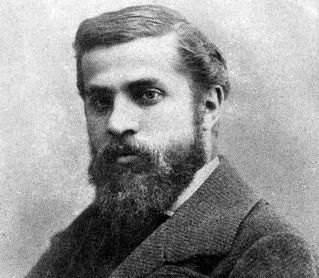
The project was first assigned to Francisco Del Vilar.
He was a Spanish architect designing many churches in and around Spain back then.
He had only finished building the crypt when disagreements with the organizing committee cropped up.
Once he left, Antoni Gaudi was asked to take over the construction of Sagrada Familia.
Crazy but true: Heard of the man who built Sagrada Familia and 200+ other monuments with just toothpicks?
Gaudi changed the designs after he took over
Francisco Paula del Villar, the first architect of this Church, wanted to build a standard Gothic revival church.
However, when he resigned due to creative differences with the sponsors, and Gaudi took over, the plans changed.
Gaudi envisaged what you see rising from the center of Barcelona.
Gaudi supervised only one facade’s construction

The Nativity Facade, dedicated to celebrating the birth of Jesus Christ, is the only part of Sagrada Familia constructed under Gaudi’s direct supervision before his passing.
It reflects Gaudi’s vision in its purest form, capturing the joy and beauty of creation in the detailed carvings and the symbolic sculptures.
The bell tower dedicated to the apostle Barnabas was the only one Gaudi saw finished.
Most of Gaudi’s plans for the church got lost
In 1936, the Spanish Civil War was on. A group of anarchists and revolutionaries set fire to the crypt and destroyed the workshop, which contained all of Gaudi’s plans and models. Thankfully, some of them were saved in time.
After the war came to a halt, construction started with whatever limited blueprints were available.
Recommended Reading: Not sure which Tower tickets to buy? Read about which is better – Nativity facade or Passion facade.
Gaudi wanted Sagrada Familia to guide ships
Gaudi didn’t just want his church to be seen from every part of Barcelona.
He wanted it to be seen from the ocean – as a guiding light for the sailors and their ships.
He had glass mosaics embedded at its highest points to ensure it was helpful for seafarers. These glass mosaics reflect both the sun and moonlight and act as beacons.
Gaudi built a school for his artisans’ kids
Antoni Gaudi was quite thoughtful, which is evident in his architecture and how he cared for those around him.
In 1909, Gaudi built a school called Sagrada Familia Schools at the church’s construction site.
He said this would help the fathers build a magnificent church and not worry about their children.
The school building contained three classrooms, a hall, and a chapel.
The school existed on the site until 2002 but was relocated nearby due to a space crunch.
A bookseller conceived Sagrada Familia
Josep Maria Bocabella was a bookseller who first planted the seeds of Sagrada Familia in Barcelona’s residents. He owned a religious printing press and bookstore, and his business had taken him to the Vatican.
In the holy city, he visited numerous churches and got inspired to build something similar in Barcelona. Once back, he started sharing his ideas with others in the community.
It took him ten years to get enough funds to start the church’s construction in 1882.
Besides Gaudi, Josep Maria Bocabella is the only person buried in Sagrada Familia.
Recommended Reading: Best time to visit Sagrada Familia
The passion facade of Sagrada Familia is controversial
Of the three facades at Sagrada Familia, Gaudi himself completed the Nativity Facade.
Spanish sculptor Josep Maria Subirachs joined the team when the Passion facade was half-ready. He was to sculpt the figures which would adorn the Passion facade.
Gaudi didn’t worry about the time to build the church
Gaudi wasn’t concerned about whether he would complete the construction in his lifetime.
His objective was to create a masterpiece. He has said, “My client is not in a hurry.”
Since he knew he had to ensure continuity after leaving, he encouraged fluidity in the plans.
He even changed his plans on the fly while visiting the construction site.
The Basilica is closely linked to St. Joseph
The Sagrada Familia has a deep connection to St. Joseph, the patron saint of workers. The idea for the basilica was inspired by the Spiritual Association of Devotees of Saint Joseph, founded by Josep Maria Bocabella.
This connection was further cemented when the cornerstone was laid on March 19, 1882—the feast day of Saint Joseph.
Recommended reading
# Camp Nou facts
# Casa Batllo facts
# La Pedrera facts
# Park Guell facts
# Casa Mila facts
